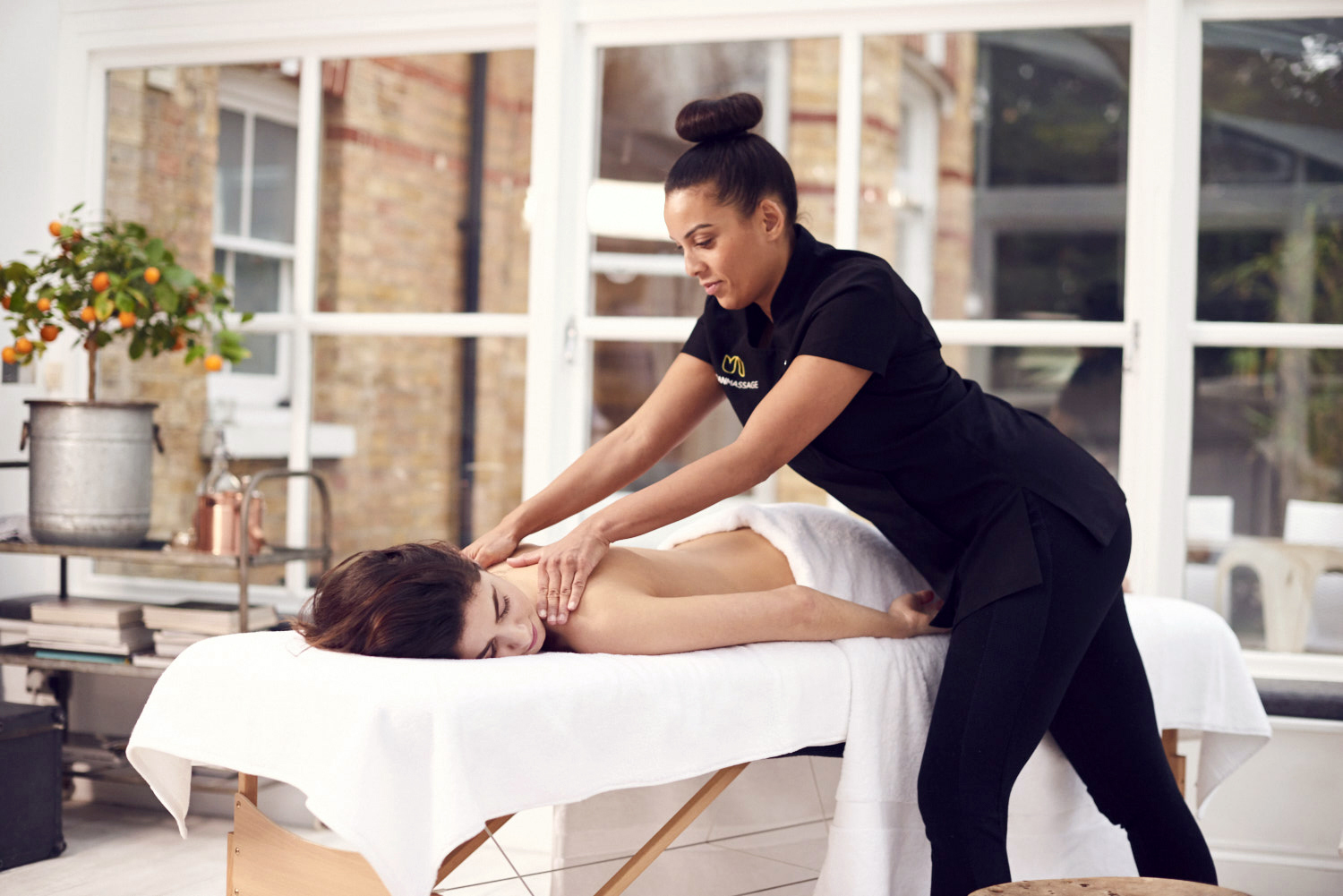What is a Shoulder Massage?
Many types of massage will spend some time on the shoulders, but if you’re suffering from a stiff neck, poor posture or frequent headaches, you might want to consider finding a treatment that really focuses on this area. This type of massage can be performed either seated upright or lying on a massage table, and will involve rubbing your upper back, shoulders, neck and even head.
What causes tense shoulders?
The neck and shoulders are typically the first place that office workers or those who spend their days seated over a computer start to feel tension. If your shoulders are too tight, you may experience limited mobility when turning your head from side to side, have daily or occasional headaches, and find that certain sleeping positions are uncomfortable. In addition, you may also simply be able to see that your shoulders are raised or hunched, rather than relaxed and back.
Knots, or “myofascial trigger points” to use their official names, are tight balls of overworked fibers in the muscles. They are similar to a spasm that has been unable to release. Massage is one of the best ways to provide some relief from knots, as it brings blood, oxygen and nutrients to the area, as well as helping any lactic acid or additional toxins to drain away. This allows the fibers to separate and the muscle to return to full health.
Tight shoulder muscles can be caused by any type of repetitive overuse, from lifting at the gym to everyday misalignment. When you’re treating tense shoulders, it’s important to accompany your massage therapy with gentle exercise and other de-stressing measures, such as meditation or deep breathing.
Benefits of a Shoulder Massage
There are many potential benefits to a shoulder rub, which may include:
- A sense of calm
- Increased mobility
- Better sleep quality
- Reduced pain in the neck and shoulders
- Improved posture
What type of massage should I choose?
If you want to specifically target your shoulders and neck, it’s often easy to find a chair massage. These are performed fully dressed, and can take anywhere from 10 minutes to 1 hour. Your therapist will use their hands, forearms and elbows to deeply target the musculature of your back and shoulders, leaving you feeling instantly lighter.
If you would like something more comprehensive, a Deep Tissue Massage will probably incorporate plenty of work on the upper back and neck, getting into the underlying layers of muscle and fascia. The effects of this type of massage are cumulative, so after a few sessions you may find that you are able to go longer between treatments.
How to do a Shoulder Massage at home
If your shoulder tension is disrupting your lifestyle, it’s always a good idea to seek out a professional massage therapist. They will be able to advise you on the best type and course of treatment.
However, if you have a friend to hand and want to try a couple of moves seated in a chair. As your anatomy knowledge is likely to be little, especially compared to a trained therapist, remember to avoid the spine to avoid injuring yourself.
These three techniques are a good place to start your own shoulder massage:
-
Forearm press
Ask your friend to stand behind you, and firmly place their forearms onto your shoulder, as if they were holding a steering wheel in front of your face. They can push down to add more pressure, and move their arms closer to and further away from your neck.
-
Back of the neck
Using one hand made into a large ‘C’ shape, they should grip the back of your neck at the base of your skill. Moving their fingers and thumb in tiny circles, they can walk their hand up and down the length of your neck.
-
Shoulder squeeze
With one hand on each shoulder, they should squeeze and release the trapezius muscle between their fingertips and the heel of the hand. Ask them to move around slightly until they find the perfect spot.
